Jeoffrey Maitem and Mark Navales,Maco,Philippines
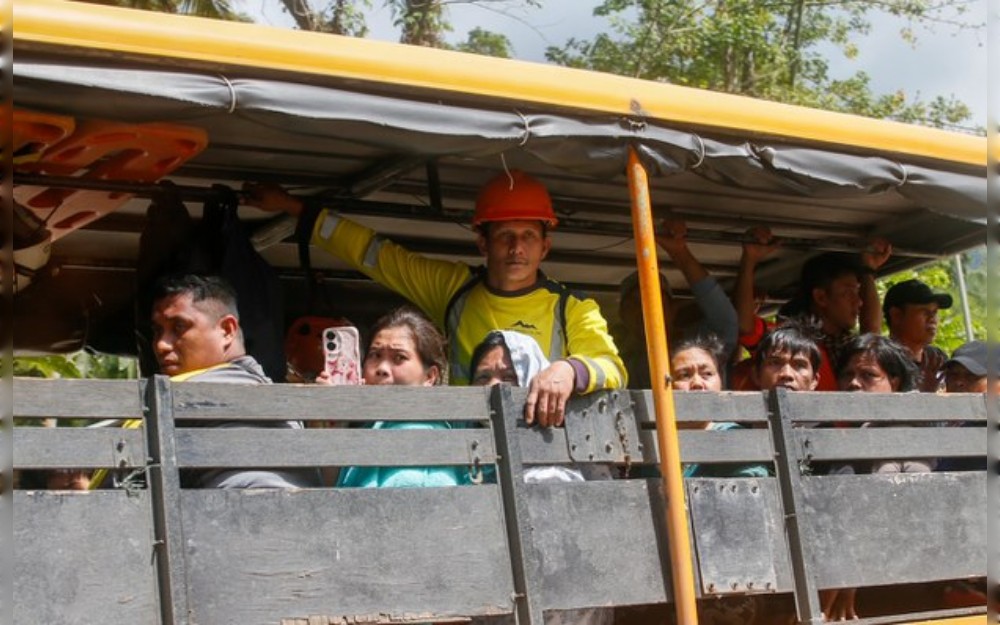
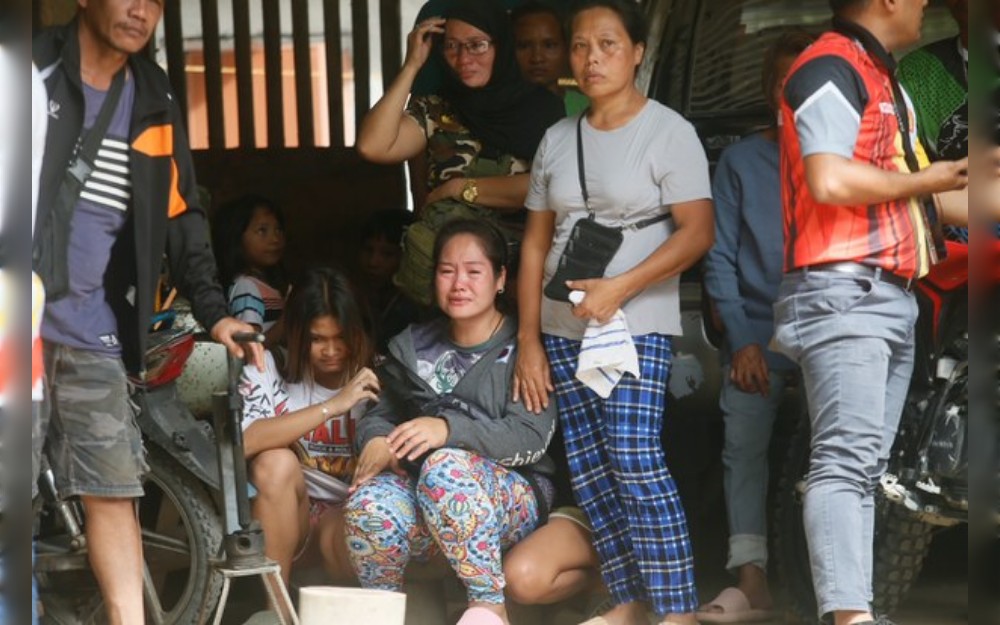
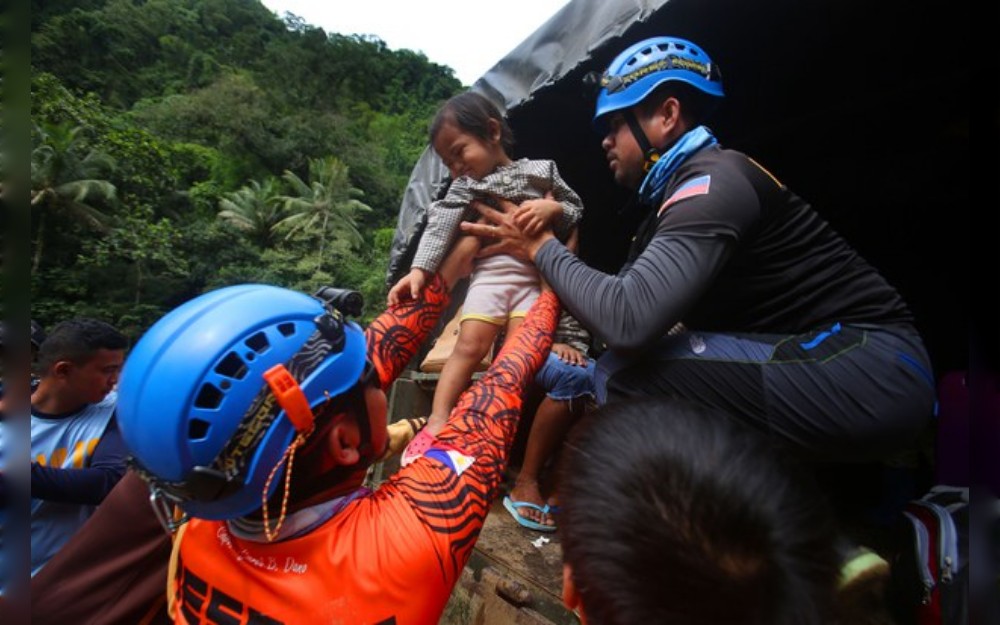
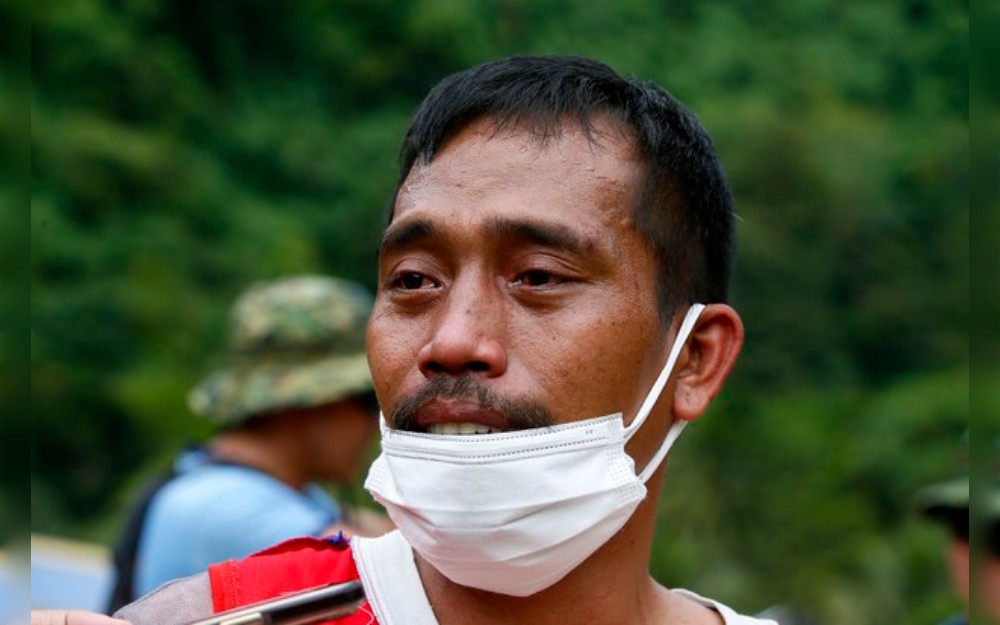
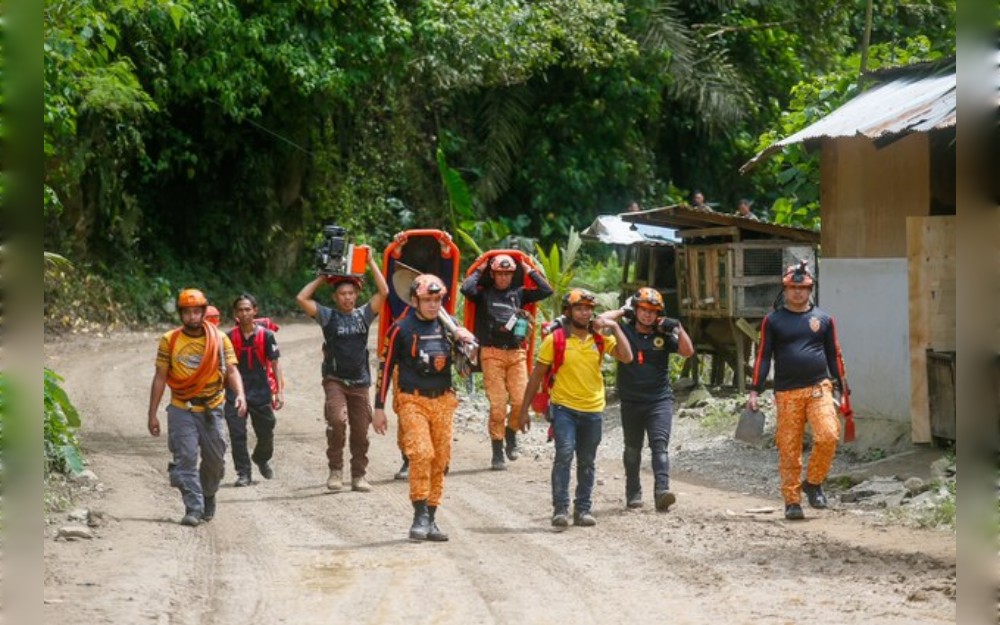
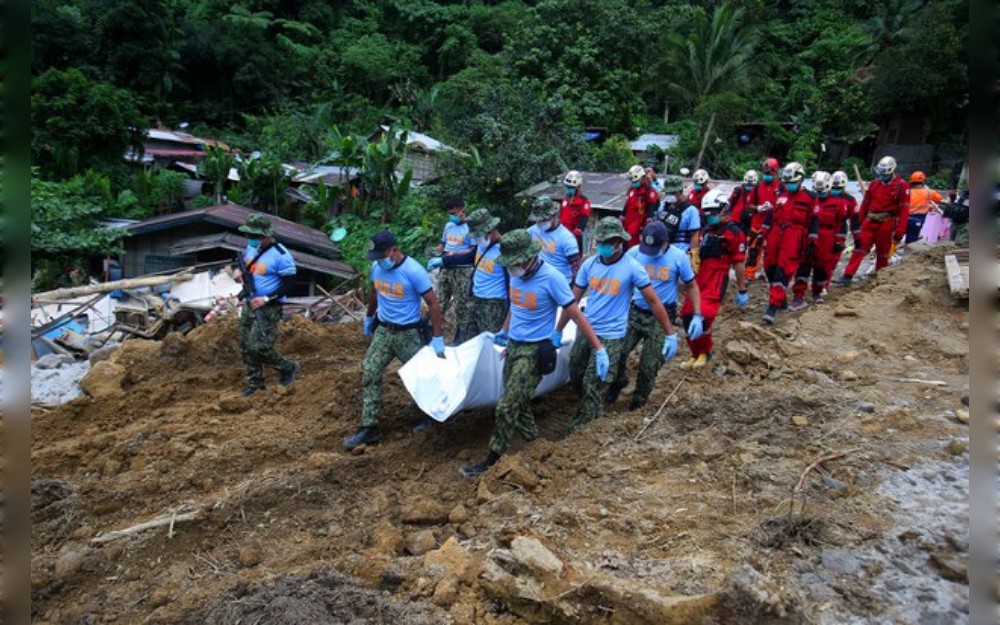
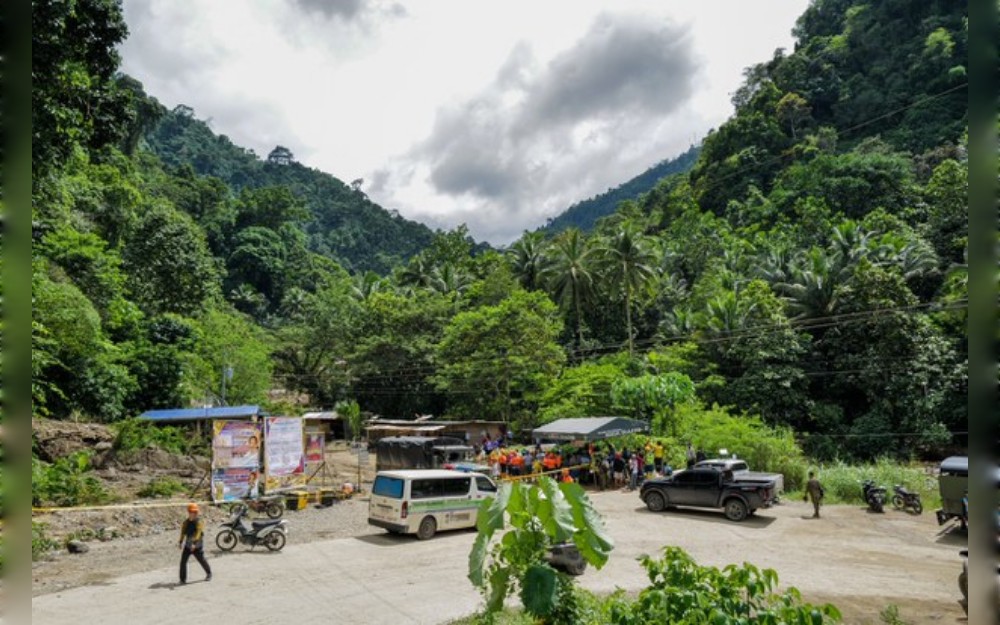
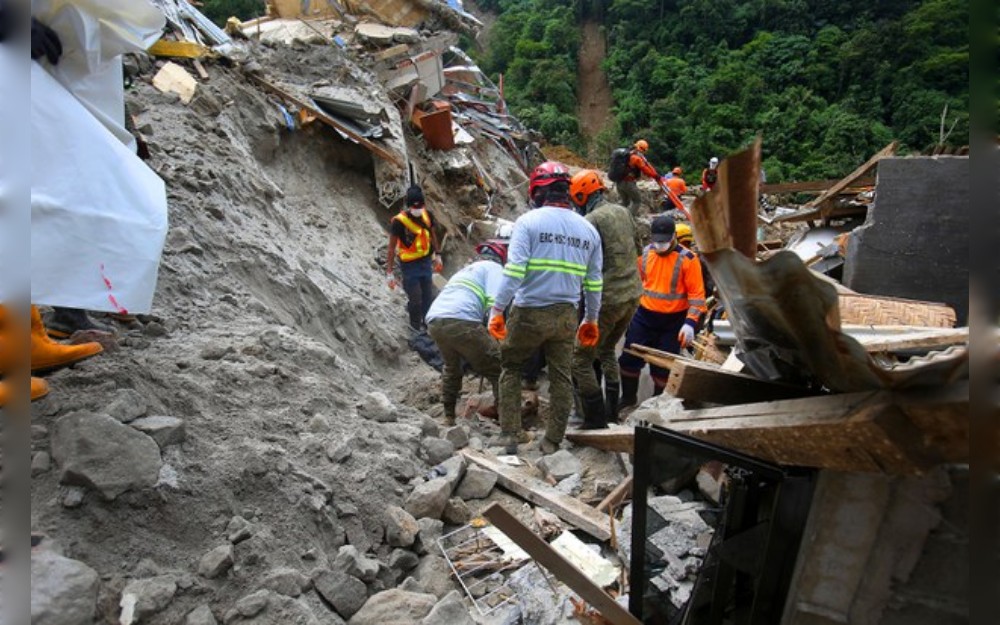
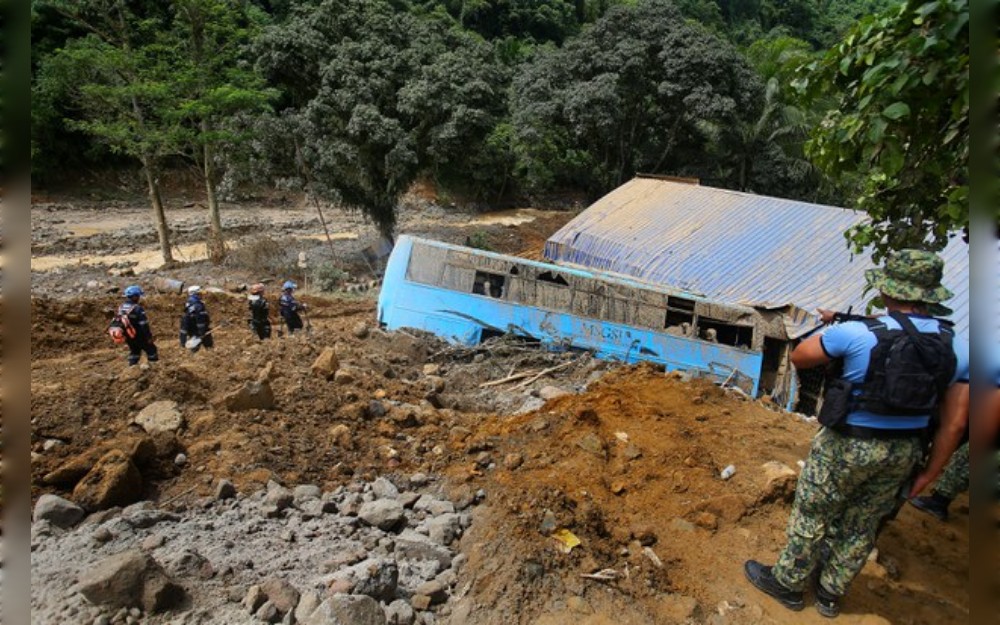
Hopes of finding more survivors are fading two days after a mudslide engulfed buses carrying dozens of miners in a gold-mining community in the southern Philippines, with unstable ground posing an added danger for rescuers.
As of late Thursday afternoon, the official number of those missing was 49, 10 dead and more than 30 injured from the landslide in this mountainous section of Davao de Oro province, according to disaster officials. Two buses used for transporting mine workers were buried in the moving mud, along with some buildings. Heavy rain had unleashed the landslide.
Edward Macapili, a spokesman for the local disaster unit in the town of Maco where the landslide occurred at 7 p.m. Tuesday, announced 49 as the official number of people missing. National police, meanwhile, said there could be more than twice as many.
Macapili said rescuers were trying to remain optimistic, noting that one survivor was pulled from rubble on Wednesday after being trapped for 11 hours.
“We are not losing hope that there could still be people alive,” he said when reporters asked him about this, but he added that efforts had already shifted to “search and retrieval.”
“We have 10 dead so far,” he said, noting that rescuers were rushing against time because “every second counts when it comes to human life.”
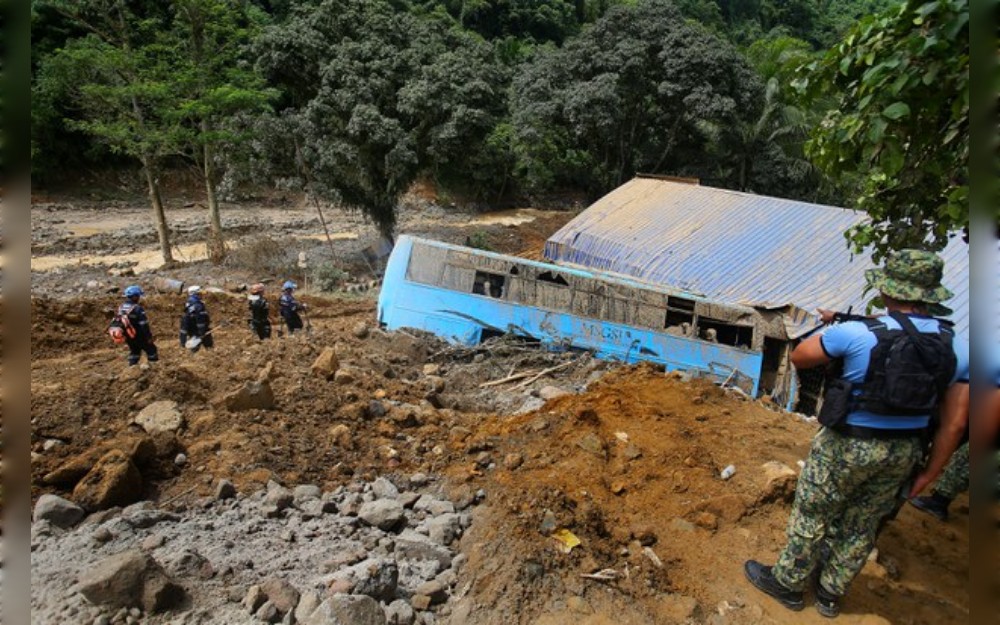
BenarNews reporters who accompanied rescuers said they were advised to tread carefully because the ground was shifting. While earth moving equipment had been dispatched to the area, workers had to first dig with their hands and shovels.
Tears at mountain site
For miner Julius Santolan, 36, each passing second was critical. His wife, Meeryniza, and their three children between the ages of 4 and 9 were missing. He broke down in tears while recalling the moments before his family disappeared.
He said he was at a neighbor’s house when the dirt crashed into the community with “a thunderous sound from the mountain.”
That was followed by eerie quiet and when he turned to look at his house, all he could see was brown sludge.
“I have had no sleep and no appetite for three days now. From where I stand, our house was here but was covered with mud,” he said, as he accompanied rescuers on the second day of operations.
“I hope they are all together now in heaven,” Santolan said even as he held out hope that they had survived.
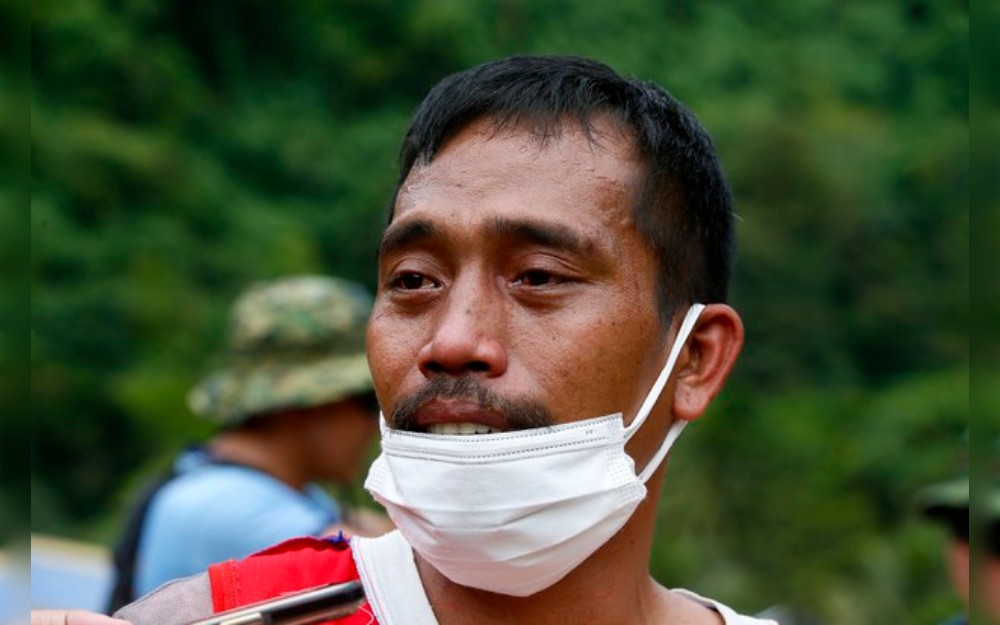
Nearby, Jenny Cano, 35, widow of a mini-bus driver contracted by the Apex Mining Co. whose body was recovered on Wednesday, said her husband used to call her minutes before he returned home from work.
But on Tuesday, the call from Jundie, 32, never came.
“His mobile phone couldn’t be reached already. Then I was just informed by his relative that he’s gone and it was confirmed that his body was here,” Cano said.
Crews carried victims’ remains to a tent covered with black tarpaulin to offer survivors a sense of privacy.
Lt. Col. Wildemar Tiu, Davao del Norte provincial mobile police force commander, said Philippine Coast Guard dogs were scouring the mound of earth that used to be homes.
“We are doing everything to locate all the missing miners and residents,” he said.
Jon Bonifacio, national coordinator of the environmental group Kalikasan People’s Network for the Environment (KPNE), has called for an investigation of APEX mining operations.
“Once again, we’re seeing how the worsening impacts of climate change are intersecting with corporate negligence and impunity in the Philippines,” he said.
“We call for immediate and adequate aid for the affected families and for a swift and thorough investigation to be conducted to determine the full extent of accountability of Apex Mining and other large-scale mining operations, … in relation to the landslide and the massive floods affecting the region,” Bonifacio said.
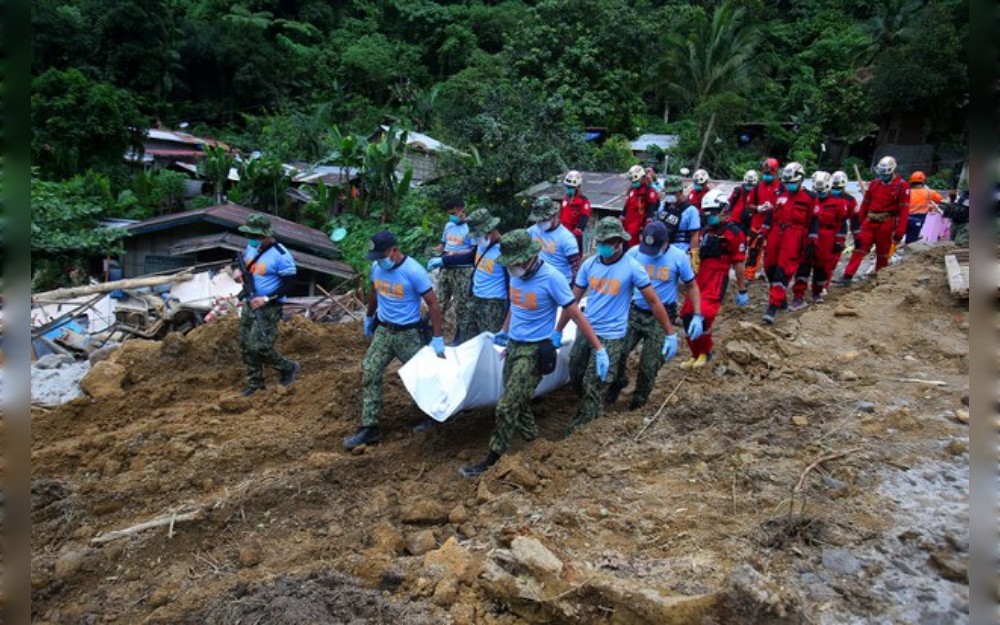
APEX issued a statement that it was working with the government to locate and rescue those missing, the state-run Philippine News Agency reported. The statement noted that the landslide occurred at an area where buses ferry employees to the mine site and not at the site itself.
“Just before the landslide, there were four 60-seater buses and one 36 pax-capacity jeep waiting for the outgoing employees. One bus had left for Mawab while the rest were still waiting when the landslide occurred, its debris covering the terminal,” it said, according to PNA.
The Philippines, located along the Pacific Ring of Fire and in the Pacific typhoon belt, is one of the most disaster-prone countries in the world.
A combination of mountainous terrain and heavy rainfall also makes the archipelago particularly susceptible to landslides.
In September 2018, more than 70 people in the northern mining town of Itogon died as a result of a mudslide caused by Typhoon Mangkhut.
The nation’s deadliest landslide occurred on Feb. 17, 2006, following a 10-day downpour in the province of Southern Leyte. It buried the entire community of Guinsaugon village there, killing more than 1,000 people.
Copyright ©2015-2024, BenarNews. Used with the permission of BenarNews.














